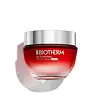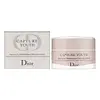What's inside
What's inside
 Key Ingredients
Key Ingredients

 Benefits
Benefits

 Concerns
Concerns

 Ingredients Side-by-side
Ingredients Side-by-side

Water
Skin ConditioningGlycerin
HumectantDicaprylyl Carbonate
EmollientAlcohol Denat.
AntimicrobialSimmondsia Chinensis Seed Oil
EmollientCocos Nucifera Oil
MaskingPersea Gratissima Oil
Skin ConditioningMangifera Indica Seed Butter
Skin ConditioningHydrogenated Coco-Glycerides
EmollientPentylene Glycol
Skin ConditioningCetearyl Alcohol
EmollientArachidyl Alcohol
EmollientCopernicia Cerifera Cera
EmollientGardenia Taitensis Flower
Skin ConditioningPrunus Armeniaca Kernel Oil
MaskingAlaria Esculenta Extract
Skin ProtectingCarrageenan
Tin Oxide
AbrasiveStearic Acid
CleansingCeramide NP
Skin ConditioningSqualane
EmollientCarbomer
Emulsion StabilisingArachidyl Glucoside
EmulsifyingCalcium Chloride
AstringentBehenyl Alcohol
EmollientCeteareth-20
CleansingCetearyl Glucoside
EmulsifyingSodium Hyaluronate
HumectantSodium Hydroxide
BufferingSodium Lactate
BufferingSodium Stearate
CleansingSodium Stearoyl Glutamate
CleansingSilica
AbrasiveMyristic Acid
Cleansing2-Oleamido-1,3-Octadecanediol
Skin ConditioningPalmitic Acid
EmollientPalmitoyl Tetrapeptide-7
Skin ConditioningPalmitoyl Tripeptide-1
Skin ConditioningAdenosine
Skin ConditioningPhenylethyl Resorcinol
AntioxidantAmmonium Acryloyldimethyltaurate/Steareth-25 Methacrylate Crosspolymer
Emulsion StabilisingHydroxypalmitoyl Sphinganine
Skin ConditioningCaprylic/Capric Triglyceride
MaskingCaprylyl Glycol
EmollientVitreoscilla Ferment
Skin ConditioningAcetyl Dipeptide-1 Cetyl Ester
Skin ConditioningSynthetic Fluorphlogopite
Polysorbate 20
EmulsifyingButylene Glycol
HumectantTocopherol
AntioxidantTocopheryl Acetate
AntioxidantPentaerythrityl Tetra-Di-T-Butyl Hydroxyhydrocinnamate
AntioxidantSalicylic Acid
MaskingMica
Cosmetic ColorantCI 77163
Cosmetic ColorantCI 77491
Cosmetic ColorantCI 77891
Cosmetic ColorantParfum
MaskingWater, Glycerin, Dicaprylyl Carbonate, Alcohol Denat., Simmondsia Chinensis Seed Oil, Cocos Nucifera Oil, Persea Gratissima Oil, Mangifera Indica Seed Butter, Hydrogenated Coco-Glycerides, Pentylene Glycol, Cetearyl Alcohol, Arachidyl Alcohol, Copernicia Cerifera Cera, Gardenia Taitensis Flower, Prunus Armeniaca Kernel Oil, Alaria Esculenta Extract, Carrageenan, Tin Oxide, Stearic Acid, Ceramide NP, Squalane, Carbomer, Arachidyl Glucoside, Calcium Chloride, Behenyl Alcohol, Ceteareth-20, Cetearyl Glucoside, Sodium Hyaluronate, Sodium Hydroxide, Sodium Lactate, Sodium Stearate, Sodium Stearoyl Glutamate, Silica, Myristic Acid, 2-Oleamido-1,3-Octadecanediol, Palmitic Acid, Palmitoyl Tetrapeptide-7, Palmitoyl Tripeptide-1, Adenosine, Phenylethyl Resorcinol, Ammonium Acryloyldimethyltaurate/Steareth-25 Methacrylate Crosspolymer, Hydroxypalmitoyl Sphinganine, Caprylic/Capric Triglyceride, Caprylyl Glycol, Vitreoscilla Ferment, Acetyl Dipeptide-1 Cetyl Ester, Synthetic Fluorphlogopite, Polysorbate 20, Butylene Glycol, Tocopherol, Tocopheryl Acetate, Pentaerythrityl Tetra-Di-T-Butyl Hydroxyhydrocinnamate, Salicylic Acid, Mica, CI 77163, CI 77491, CI 77891, Parfum
Water
Skin ConditioningDicaprylyl Carbonate
EmollientButylene Glycol
HumectantSodium Hydroxide
BufferingIsononyl Isononanoate
EmollientNiacinamide
SmoothingLactic Acid
BufferingCitric Acid
BufferingCetyl Alcohol
EmollientStearyl Alcohol
EmollientGlycolic Acid
BufferingGlyceryl Stearate
EmollientPEG-100
HumectantPentylene Glycol
Skin ConditioningPolyacrylate Crosspolymer-6
Emulsion StabilisingVinyldimethicone
Methicone
EmollientPolyphenylsilsesquioxane
PEG-Crosspolymer
Phenoxyethanol
PreservativeMyristyl Myristate
EmollientJojoba Esters
EmollientBehenyl Alcohol
EmollientParfum
MaskingCera Alba
EmollientStearic Acid
CleansingTocopherol
AntioxidantTocopheryl Acetate
AntioxidantMagnesium Silicate
AbsorbentXanthan Gum
EmulsifyingSodium Hyaluronate
HumectantAdenosine
Skin ConditioningPEG-8 Phosphate
Skin ProtectingPEG-7
HumectantGlyceryl Cocoate
EmollientPolyquaternium-7
Iritone
PerfumingIris Florentina Root
MaskingUlmus Davidiana Root Extract
Skin ConditioningBHT
AntioxidantMethylsilanol PCA
HumectantPEG-8 Glyceryl Trilaurate
Water, Dicaprylyl Carbonate, Butylene Glycol, Sodium Hydroxide, Isononyl Isononanoate, Niacinamide, Lactic Acid, Citric Acid, Cetyl Alcohol, Stearyl Alcohol, Glycolic Acid, Glyceryl Stearate, PEG-100, Pentylene Glycol, Polyacrylate Crosspolymer-6, Vinyldimethicone, Methicone, Polyphenylsilsesquioxane, PEG-Crosspolymer, Phenoxyethanol, Myristyl Myristate, Jojoba Esters, Behenyl Alcohol, Parfum, Cera Alba, Stearic Acid, Tocopherol, Tocopheryl Acetate, Magnesium Silicate, Xanthan Gum, Sodium Hyaluronate, Adenosine, PEG-8 Phosphate, PEG-7, Glyceryl Cocoate, Polyquaternium-7, Iritone, Iris Florentina Root, Ulmus Davidiana Root Extract, BHT, Methylsilanol PCA, PEG-8 Glyceryl Trilaurate
 Reviews
Reviews

Ingredients Explained
These ingredients are found in both products.
Ingredients higher up in an ingredient list are typically present in a larger amount.
Adenosine is in every living organism. It is one of four components in nucleic acids that helps store our DNA.
Adenosine has many benefits when used. These benefits include hydrating the skin, smoothing skin, and reducing wrinkles. Once applied, adenosine increases collagen production. It also helps with improving firmness and tissue repair.
Studies have found adenosine may also help with wound healing.
In skincare products, Adenosine is usually derived from yeast.
Learn more about AdenosineBehenyl Alcohol is a type of fatty alcohol (these are different from the drying, solvent alcohols).
Fatty Alcohols have hydrating properties and are most often used as an emollient or to thicken a product. They are usually derived from natural fats and oils; behenyl alcohol is derived from the fats of vegetable oils.
Emollients help keep your skin soft and hydrated by creating a film that traps moisture in.
In 2000, Behenyl Alcohol was approved by the US as medicine to reduce the duration of cold sores.
Learn more about Behenyl AlcoholButylene Glycol (or BG) is used within cosmetic products for a few different reasons:
Overall, Butylene Glycol is a safe and well-rounded ingredient that works well with other ingredients.
Though this ingredient works well with most skin types, some people with sensitive skin may experience a reaction such as allergic rashes, closed comedones, or itchiness.
Learn more about Butylene GlycolDicaprylyl Carbonate comes from carbonic acid and caprylyl alcohol, a fatty alcohol. It is an emollient and gives skin a velvet feel. The sources of Dicaprylyl Carbonate may be synthetic or from animals.
As an emollient, Dicaprylyl Carbonate creates a film on the skin. This film traps moisture in, keeping your skin soft and hydrated.
Parfum is a catch-all term for an ingredient or more that is used to give a scent to products.
Also called "fragrance", this ingredient can be a blend of hundreds of chemicals or plant oils. This means every product with "fragrance" or "parfum" in the ingredients list is a different mixture.
For instance, Habanolide is a proprietary trade name for a specific aroma chemical. When used as a fragrance ingredient in cosmetics, most aroma chemicals fall under the broad labeling category of “FRAGRANCE” or “PARFUM” according to EU and US regulations.
The term 'parfum' or 'fragrance' is not regulated in many countries. In many cases, it is up to the brand to define this term.
For instance, many brands choose to label themselves as "fragrance-free" because they are not using synthetic fragrances. However, their products may still contain ingredients such as essential oils that are considered a fragrance by INCI standards.
One example is Calendula flower extract. Calendula is an essential oil that still imparts a scent or 'fragrance'.
Depending on the blend, the ingredients in the mixture can cause allergies and sensitivities on the skin. Some ingredients that are known EU allergens include linalool and citronellol.
Parfum can also be used to mask or cover an unpleasant scent.
The bottom line is: not all fragrances/parfum/ingredients are created equally. If you are worried about fragrances, we recommend taking a closer look at an ingredient. And of course, we always recommend speaking with a professional.
Learn more about ParfumPentylene glycol is typically used within a product to thicken it. It also adds a smooth, soft, and moisturizing feel to the product. It is naturally found in plants such as sugar beets.
The hydrophilic trait of Pentylene Glycol makes it a humectant. As a humectant, Pentylene Glycol helps draw moisture from the air to your skin. This can help keep your skin hydrated.
This property also makes Pentylene Glycol a great texture enhancer. It can also help thicken or stabilize a product.
Pentylene Glycol also acts as a mild preservative and helps to keep a product microbe-free.
Some people may experience mild eye and skin irritation from Pentylene Glycol. We always recommend speaking with a professional about using this ingredient in your routine.
Pentylene Glycol has a low molecular weight and is part of the 1,2-glycol family.
Learn more about Pentylene GlycolSodium Hyaluronate is hyaluronic acid's salt form. It is commonly derived from the sodium salt of hyaluronic acid.
Like hyaluronic acid, it is great at holding water and acts as a humectant. This makes it a great skin hydrating ingredient.
Sodium Hyaluronate is naturally occurring in our bodies and is mostly found in eye fluid and joints.
These are some other common types of Hyaluronic Acid:
Learn more about Sodium HyaluronateSodium Hydroxide is also known as lye or caustic soda. It is used to adjust the pH of products; many ingredients require a specific pH to be effective.
In small amounts, sodium hydroxide is considered safe to use. However, large amounts may cause chemical burns due to its high alkaline.
Your skin has a natural pH and acid mantle. This acid mantle helps prevent harmful bacteria from breaking through. The acid mantle also helps keep your skin hydrated.
"Alkaline" refers to a high pH level. A low pH level would be considered acidic.
Learn more about Sodium HydroxideStearic Acid is a fatty acid. It is an emollient, emulsifier, and texture enhancer.
As an emollient, stearic acid helps soften skin. It aids the skin's protective barrier by preventing water loss. It also provides a gentle cleansing effect without stripping away natural oils.
Stearic acid may also be used to enhance the texture of products. It can add volume and stabilize ingredients such as water and oil. This can help water and oil ingredients from separating.
Sources of stearic acid include animal or vegetable fats/oils such as coconut or shea. It can be naturally found in butter, cocoa butter, shea butter, vegetable fats, and animal tallow.
This ingredient may not be Malassezia folliculitis, or fungal-acne safe.
Learn more about Stearic AcidTocopherol (also known as Vitamin E) is a common antioxidant used to help protect the skin from free-radicals and strengthen the skin barrier. It's also fat soluble - this means our skin is great at absorbing it.
Vitamin E also helps keep your natural skin lipids healthy. Your lipid skin barrier naturally consists of lipids, ceramides, and fatty acids. Vitamin E offers extra protection for your skin’s lipid barrier, keeping your skin healthy and nourished.
Another benefit is a bit of UV protection. Vitamin E helps reduce the damage caused by UVB rays. (It should not replace your sunscreen). Combining it with Vitamin C can decrease sunburned cells and hyperpigmentation after UV exposure.
You might have noticed Vitamin E + C often paired together. This is because it is great at stabilizing Vitamin C. Using the two together helps increase the effectiveness of both ingredients.
There are often claims that Vitamin E can reduce/prevent scarring, but these claims haven't been confirmed by scientific research.
Learn more about TocopherolTocopheryl Acetate is AKA Vitamin E. It is an antioxidant and protects your skin from free radicals. Free radicals damage the skin by breaking down collagen.
One study found using Tocopheryl Acetate with Vitamin C decreased the number of sunburned cells.
Tocopheryl Acetate is commonly found in both skincare and dietary supplements.
Learn more about Tocopheryl AcetateWater. It's the most common cosmetic ingredient of all. You'll usually see it at the top of ingredient lists, meaning that it makes up the largest part of the product.
So why is it so popular? Water most often acts as a solvent - this means that it helps dissolve other ingredients into the formulation.
You'll also recognize water as that liquid we all need to stay alive. If you see this, drink a glass of water. Stay hydrated!
Learn more about Water